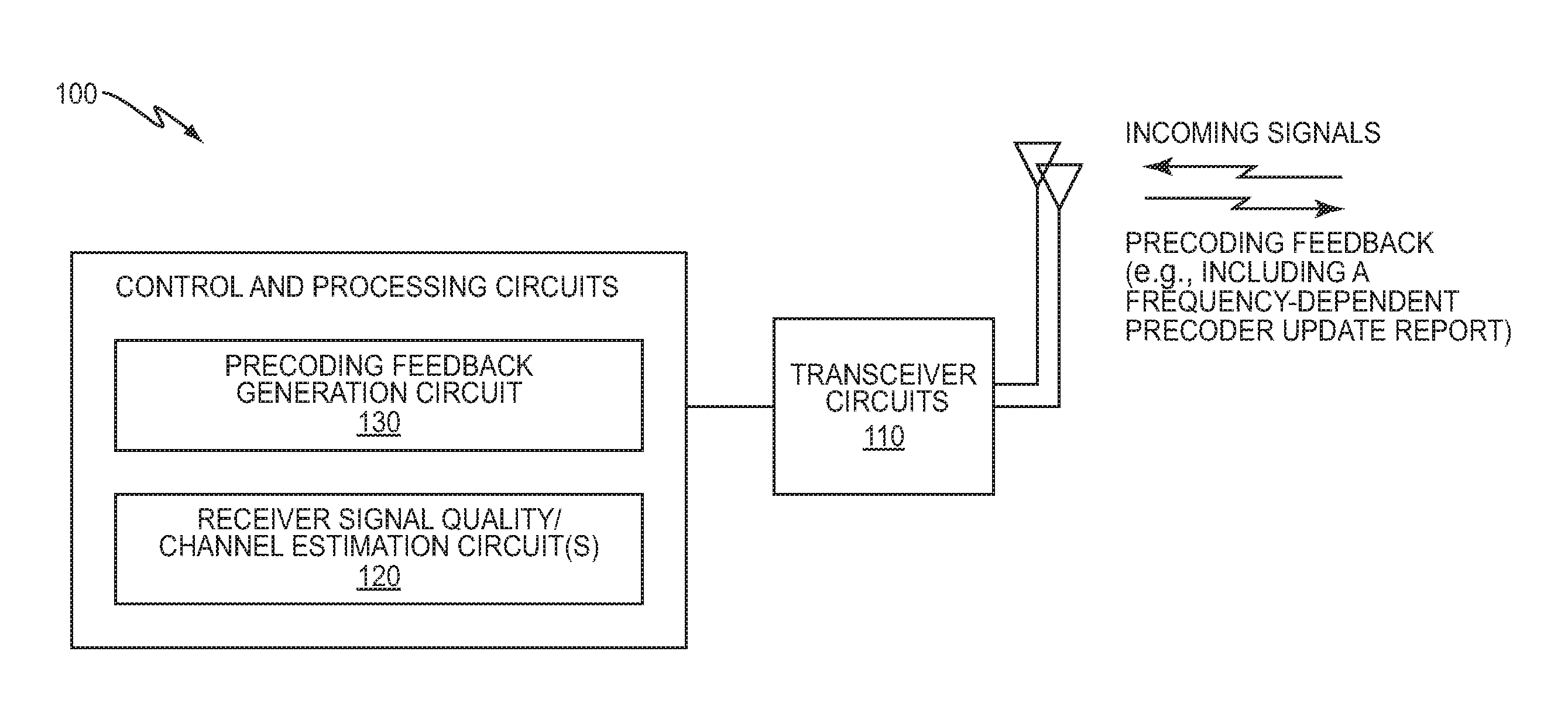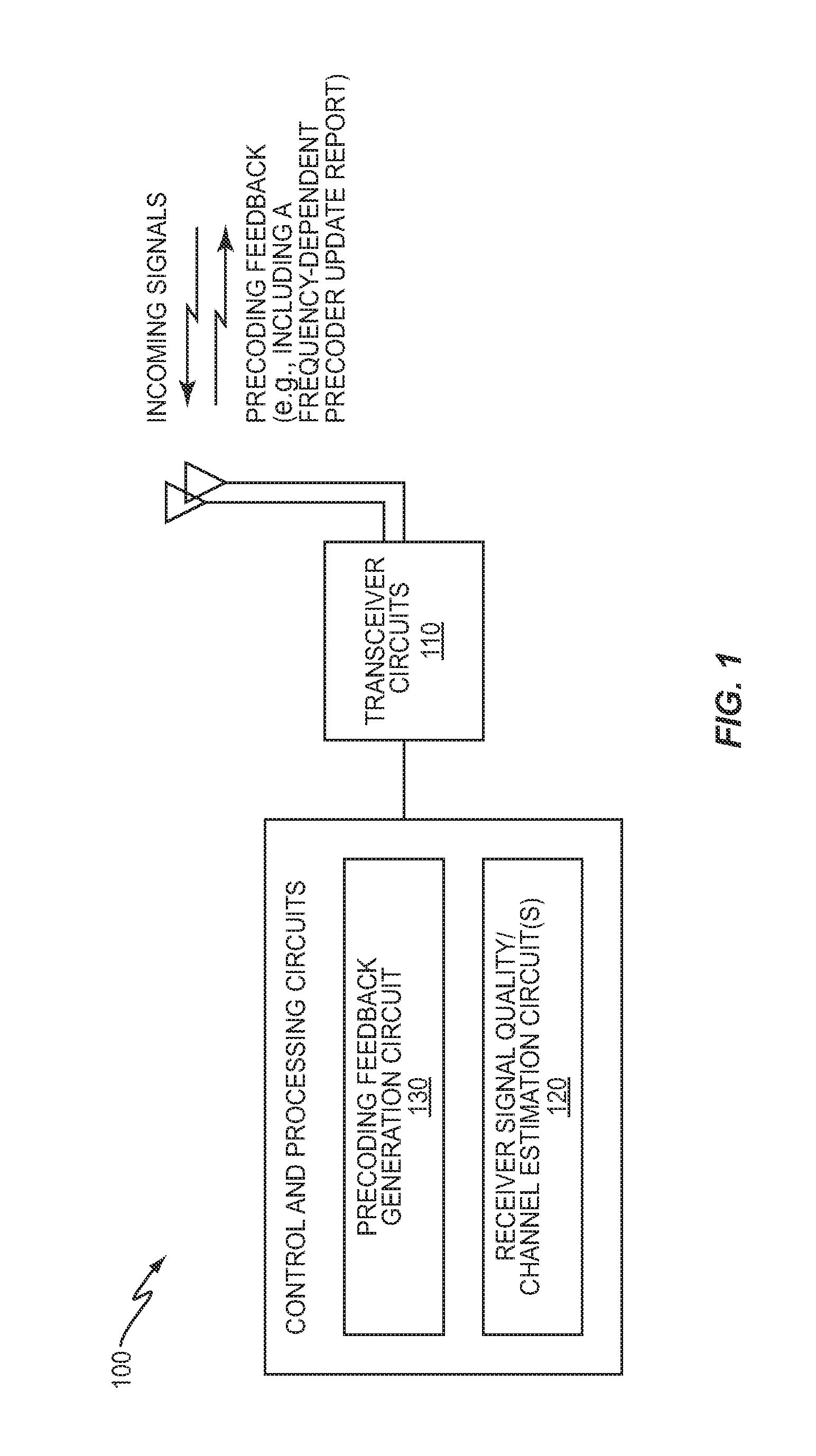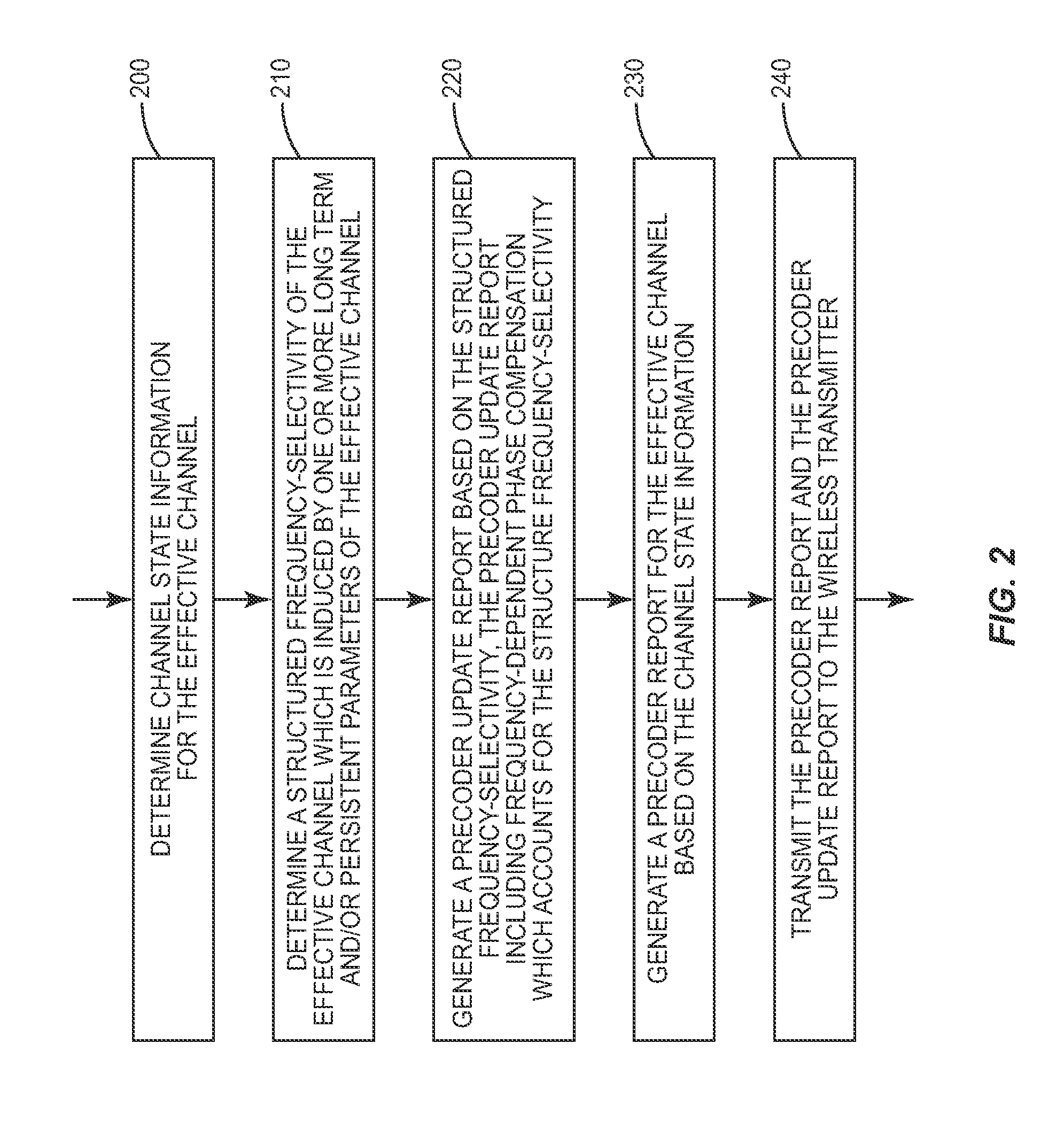Precoder Codebooks for Effective Channels with Structured Frequency-Selectivity
a precoder and effective channel technology, applied in the field of transmission precoding, can solve the problems of significant larger feedback/signaling overhead, increased system cost, and inability to preserve the correlation of propagation channels in effective channels, so as to reduce precoder performance degradation and ensure the effect of precoder feedback efficiency
- Summary
- Abstract
- Description
- Claims
- Application Information
AI Technical Summary
Benefits of technology
Problems solved by technology
Method used
Image
Examples
Embodiment Construction
While this specification uses LTE networks and terminology for an example context, the embodiments described herein are equally applicable to other systems, including but not limited to WCDMA, CDMA, WiMax, UMB (Ultra Mobile Broadband), etc.
Structured frequency-selectivity in an effective channel may be induced by many factors and deployment scenarios, such as for non-calibrated transmit antennas and / or for multi-site joint transmission. The embodiments described herein account for such frequency selectivity via a small or moderate feedback overhead.
FIG. 1 illustrates an embodiment of a network node 100 that communicates with another node of a network over an effective channel that includes the actual propagation channel, transmit filters and receive filters. For example, the network node 100 may be a wireless receiver or an intermediary node in a network coupled between a wireless transmitter and a wireless receiver. The network node 100 includes transceiver circuits 110 for receivi...
PUM
 Login to View More
Login to View More Abstract
Description
Claims
Application Information
 Login to View More
Login to View More - R&D
- Intellectual Property
- Life Sciences
- Materials
- Tech Scout
- Unparalleled Data Quality
- Higher Quality Content
- 60% Fewer Hallucinations
Browse by: Latest US Patents, China's latest patents, Technical Efficacy Thesaurus, Application Domain, Technology Topic, Popular Technical Reports.
© 2025 PatSnap. All rights reserved.Legal|Privacy policy|Modern Slavery Act Transparency Statement|Sitemap|About US| Contact US: help@patsnap.com



